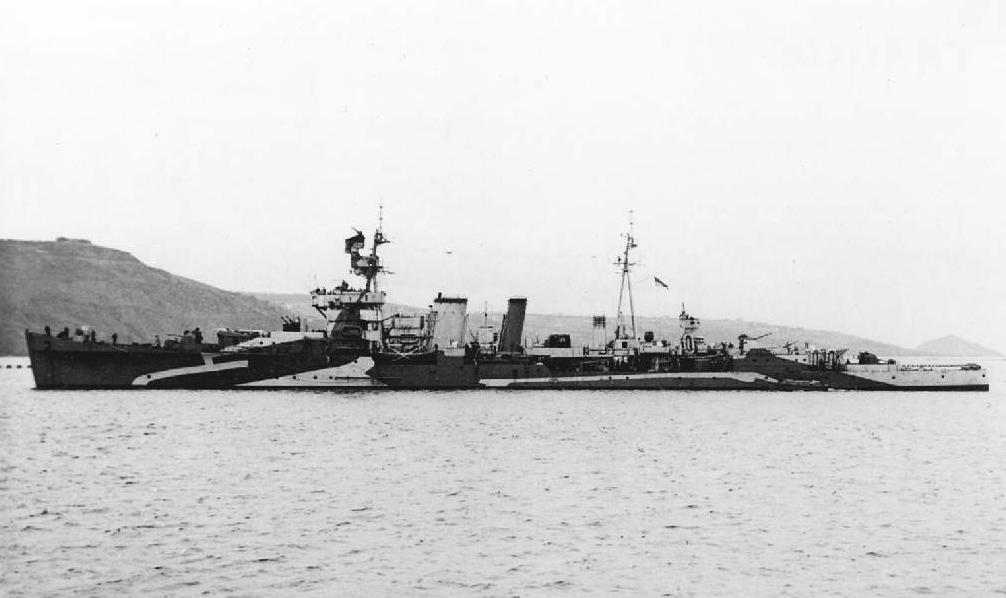- Yes
- No
Hello everyone, today I have for you another interesting ship fielded by the Royal Navy during the Second World War: HMS Calcutta, a member of the C-Class of Cruisers Carlisle sub-class.
History and Service
Arriving too late to see service during the First World War, HMS Calcutta was intially sent to the Caribbean as head of the 8th Light Cruiser Squadron, even surviving a hurricane that passed over the region in 1926. She suffered structural damage after being forced against the jetty she was berthed at and required repair, which was finally completed in 1929. In 1938, with the clouds of war gathering over Europe, it was decided to turn her into an Anti-Aircraft Cruiser, removing her WW1 vintage 6-inch cannons and torpedo tubes and giving her 4 4-inch dual mounts, a quad mount 2 pounder Pom-Pom and 2 12.7mm Vickers Quad mount.
Her first major operation during the war was acting as anti aircraft support for the Allied landing in Norway, acting in conjunction with HMS Birmingham at the time and after the call to evacuate Allied troops from Norway, she embarked over 700 troops and successfully evacuated them back to the UK. Her role in evacuations was not over however and she took part in Operation Dynamo and Ariel, providing air coverage for evacuation forces and also assiting the evacuations, by carrying over 1800 soldiers to safety. After this she was sent to the Mediterranean to support Allied shore bombardments of Italy and the various convoys sent to help Malta during her siege. With the deteriorating situation in Greece in 1941, she was again assigned to evacuation duty, escorting the evacuation ships to Crete before returning to the Malta convoys. Her final campaign came during the Axis airborne invasion of Crete in 1941, where she was intially assigned to Force C to deter any seaborne invasion. The task force came under heavy air attack suffering multiple casulties, but HMS Calcutta did not sustain major damage and had to return to Alexandria to restock on ammunition, such was the intensity of air attack. When the evacuation order came, HMS Calcutta was sent in the company of her sister ship HMS Coventry on 1 June 1941 to once more provide Anti-Aircraft cover, however at around 100 nautical miles away from Alexandria, the ships were spotted and attacked by two Junkers Ju-88s. HMS Calcutta was struck twice and was lost, with 107 of her crew perishing in the attack. No other ship in the Royal Navy has beared her name since.

Specifications
Displacement normal: 4290 t
Displacement full: 5215 t
Length: 137.6m
Breadth: 13.3 m
Draught: 4.70 m
No of shafts: 2
Machinery: 2 sets Parsons geared steam turbines, 6 Yarrow boilers
Power: 40000 Horsepower
Max speed: 29 kts
Fuel: 935 t of oil
Endurance: 5900 nm at 10 kts
Armour:
- Belt: 76 - 38mm
- Deck: 25mm
- Gun shields: 25mm
Complement: 432
Armament: 4 x 2 - 102/45 QF Mk XVI, 1 x 4 - 40/39 2pdr QF Mk VIII, 2 x 4 - 12.7/62
Playstyle
Factoring in it’s small calibre weapons and lack of armour, facing anything above a low tier light cruiser would be a death sentence. But that’s not the point of this ship, what it will excel at will be using those rapid firing guns to deal with fast movers and aircraft that may pose a threat to the more heavy hitting but slower firing cruisers in may be working along side. One downside to take into account would be the firing arcs of the main battery as if facing head on, you will only be able to bear 1 set of the dual 102mms against a target. However, factoring in the history behind the ship, and the potential it has for being a fun ship, I feel that it would be an excellent addition ot the game for the Royal Navy in War Thunder
Sources
Angus Konstam; British Light Cruisers 1939-1945, Osprey Publishing



